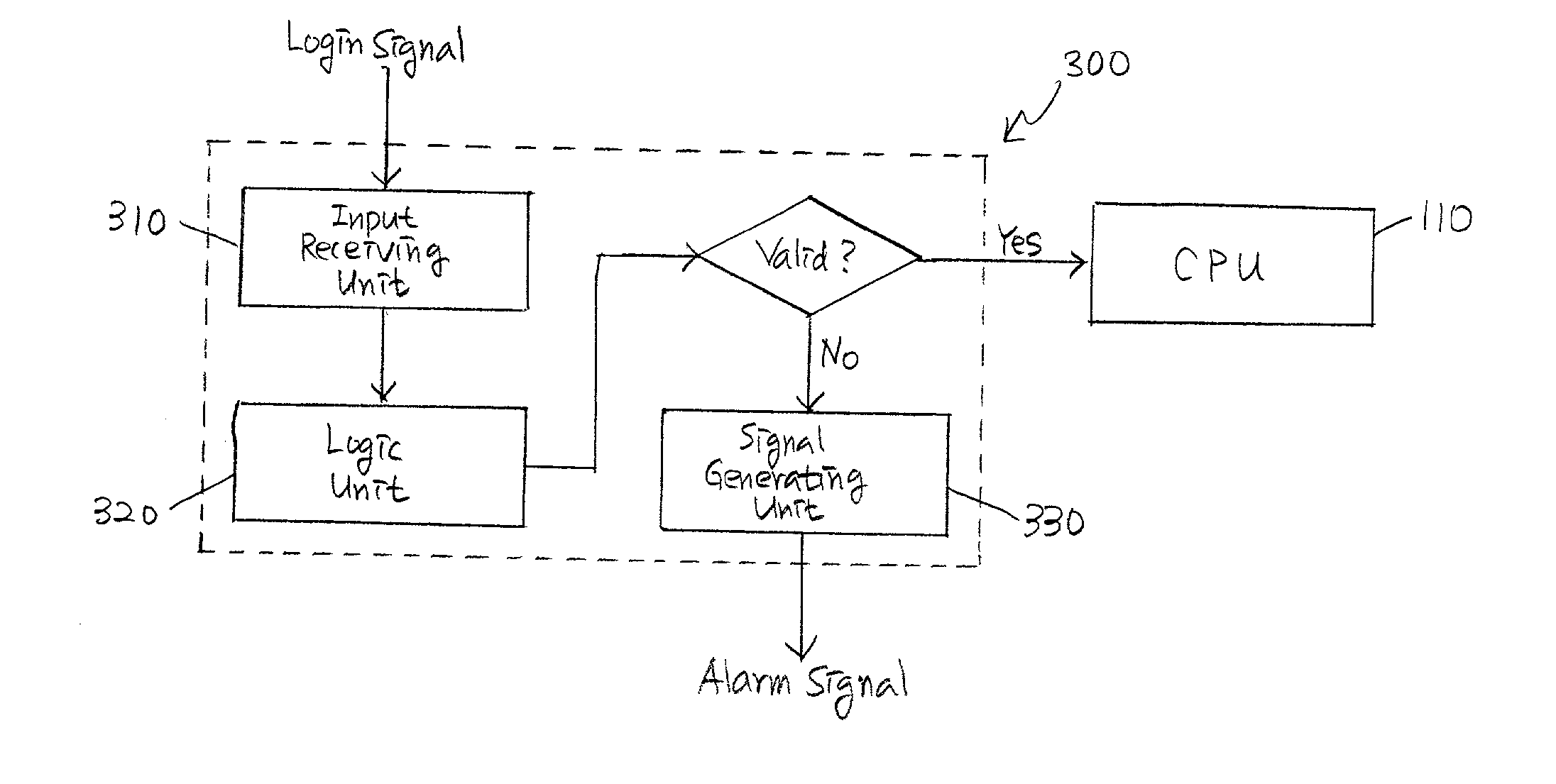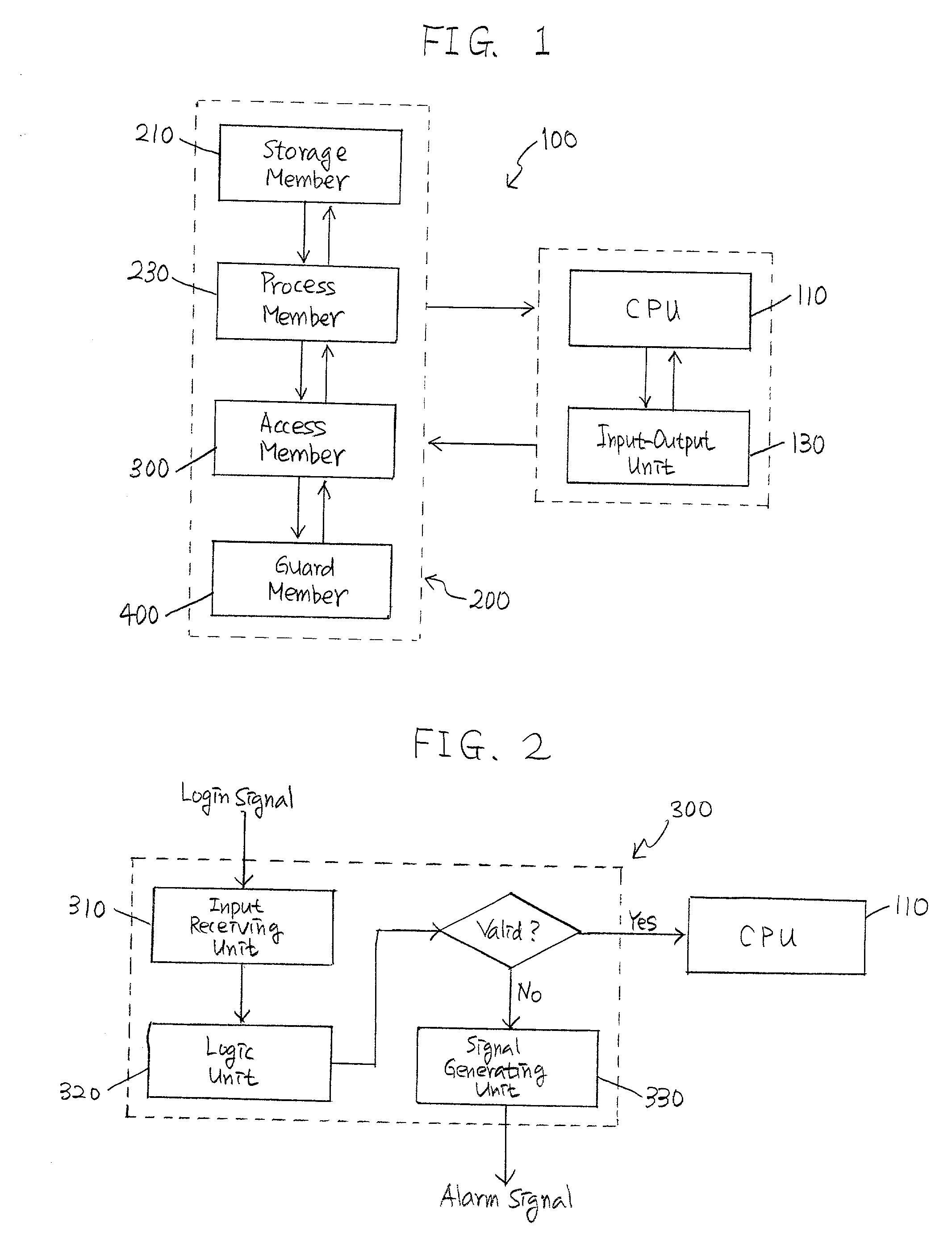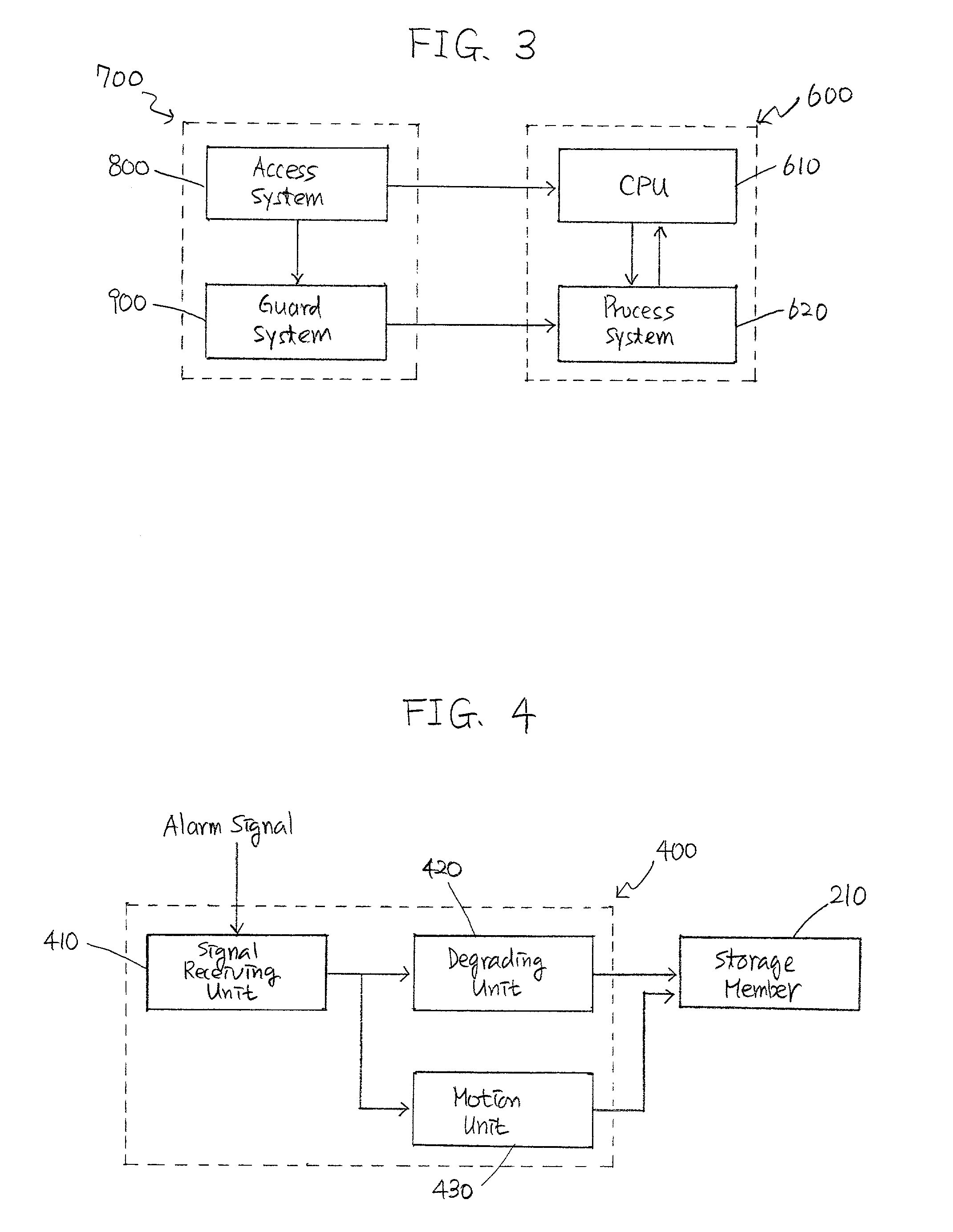Secure data storage systems
- Summary
- Abstract
- Description
- Claims
- Application Information
AI Technical Summary
Problems solved by technology
Method used
Image
Examples
Embodiment Construction
[0057] The present invention relates to various data storage systems and methods therefor capable of allowing an authorized user to process various data stored therein and for preventing an unauthorized user from accessing and processing the data. Following two steps are generally required to fulfill the foregoing objectives of this invention, i.e., detecting unauthorized attempts by the unauthorized user to access such data and degrading at least a portion of the data before the unauthorized user accesses and / or processes the data. Such data storage systems and methods therefor may be readily applied to various data storage devices such as, e.g., hard disks, RAMs, ROMs, and disk drivers for personal as well as main-frame computers and may also be incorporated into floppy disks, compact disks, digital video disks, and / or ZIP disks which can be processed by the foregoing drivers. FIGS. 1 to 7 describe various exemplary embodiments of the data storage systems, their constituents, and ...
PUM
 Login to View More
Login to View More Abstract
Description
Claims
Application Information
 Login to View More
Login to View More - R&D
- Intellectual Property
- Life Sciences
- Materials
- Tech Scout
- Unparalleled Data Quality
- Higher Quality Content
- 60% Fewer Hallucinations
Browse by: Latest US Patents, China's latest patents, Technical Efficacy Thesaurus, Application Domain, Technology Topic, Popular Technical Reports.
© 2025 PatSnap. All rights reserved.Legal|Privacy policy|Modern Slavery Act Transparency Statement|Sitemap|About US| Contact US: help@patsnap.com



